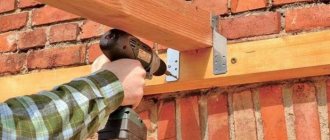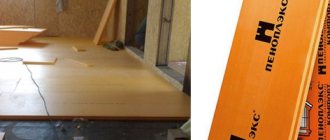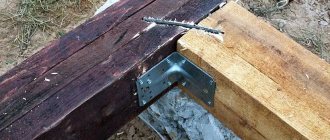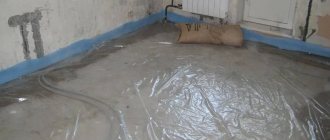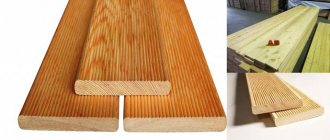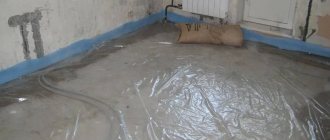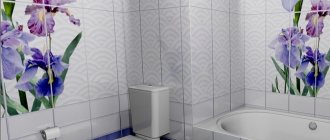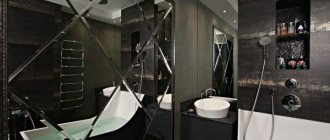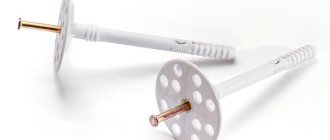Features of the selection and installation of dowels for foam blocks (foam concrete)
A dowel for a foam block is a special fastening element that makes it possible to mount a variety of objects, equipment, and furniture to fragile walls made of porous material.
Foam block walls are fragile and have a special structure, which is why ordinary nails or self-tapping screws cannot securely fasten inside. In this regard, many craftsmen prefer to provide special mortgages in advance where they plan to mount something to the wall.
It is not at all necessary to think through all the details in advance (and it is difficult to decide during the construction process what will be fixed where), because to arrange a high-quality and durable installation, you can use special dowels for foam blocks. There are several types of them, differing in type of design, material, size, and installation features.
Using a dowel for foam concrete, you can attach paintings, furniture, shelves, plumbing fixtures, fittings, and various equipment to a wall made of blocks, guaranteeing the quality, reliability and long service life of the fasteners.
How to hang a kitchen on aerated concrete?
To secure very heavy furniture structures or household appliances, screws, nails, self-tapping screws and similar devices are sometimes not enough. To hang kitchen cabinets on aerated concrete walls, it is advisable to use chemical anchors.
By the way! It will be interesting to know: How to make a niche in the wall
Kitchen cabinet can be hung on aerated concrete wall
They need to be installed in this order:
Why does foam concrete need special fasteners?
The main distinctive features of foam blocks: low weight, low density, high level of hygroscopicity, porous structure. For the most part, properties act as advantages during the construction and operation of buildings, but not at the moment of attaching some objects to the walls.
The structure of foam concrete is porous, the adhesion to materials is not very good, so the blocks cannot always cope with the loads, and therefore special dowels are provided for them.
Properly selected fasteners for foam blocks will not only secure equipment or furniture with high quality, but will also strengthen the working structure and significantly increase the percentage of permissible loads.
There are also chemical anchors for foam blocks, which are created specifically for working in cellular concrete and provide maximum quality of fastening. In this case, the main task of the dowel is to create internal support in the block during the expansion process inside the aerated concrete and preserve the fragile material from destruction.
Dowels can be of different diameters and lengths, made of metal or plastic, and are supplied in packs of 50-1000 pieces. According to the scope of application, dowels for foam concrete are intended for external/internal work, according to the installation method - driven, screwed and others (chemical anchors are distinguished separately).
Which fastener do you prefer?
In modern construction stores you can find a variety of anchors for foam blocks, which differ in material, design, shape, length, and diameter. The most common options are a metal dowel-nail, a chemical anchor, an M4 screw, an anchor bolt, and various types of self-tapping screws.
Criteria for choosing the type of foam block fastening:
- Plastic fasteners - chosen for mounting small interior items
- Dowel-nails - for arranging through fastenings of building materials outside/indoors
- Metal anchor – suitable for attachments and heavy furniture
- Metric screw - relevant for installing doors, windows, various types of technical equipment
- Foundation bolts - used where highly complex work with considerable loads is carried out
- Chemical anchor - a universal fastening for foam blocks, which provides maximum reliability and can be used in a wide variety of cases
Foam concrete dowel
When thinking about which fasteners to choose for foam blocks, which is best suited for a particular task, you must first consider all the structures. Dowels for foam concrete blocks are usually made of metal or plastic. Each of the materials has its own disadvantages and advantages.
Types of anchors for foam blocks by material:
- Metal - this option is chosen where there are serious requirements for fire safety, you need to secure something of great weight, mount a building structure, etc. The dowel is equipped with four spacer segments and is made with external teeth, which increase the load-bearing capacity.
- Nylon is more often used in construction and installation work. This dowel does not wear out, does not age, lasts for many years, and is ideal for fastening not very heavy objects in everyday life. The attachment to the foam block is selected in accordance with the load and type of product being mounted; the diameter is usually 4-12 millimeters.
- Polyethylene and polypropylene are rarely used, since such fasteners are sold only in highly specialized stores.
In addition to the material, when choosing a dowel for a foam block, pay attention to the length of the anchor (corresponds to the load), diameter, and design features.
Self-tapping screws
Such fastening into a foam block is used quite rarely and only if a serious load is not created. Typically, this option is chosen for attaching pictures, frames, etc., by mounting a self-tapping screw measuring 3.5x55. But if the load is not minimal, it is still better to take a plastic dowel and not risk destroying the fragile foam concrete walls.
M4 screw
This type of dowel is a metal fastener with an expanding element. Can be used for both foam concrete and dense aerated concrete. A screw with metal expansion elements is easy to install: first, you need to mark a foam concrete wall, make a hole, insert fasteners and tighten, which will force the metal part to be securely fixed in the block due to expansion.
Chemical anchor
Chemical anchors for foam concrete are leaders in the field. The design is simple: the anchor consists of a screw/pin, a sleeve, and an injection compound (special adhesive). The fastener is implanted into the foam block, spreading the glue inside, preventing the material from crumbling or collapsing. This fastening system is considered the most effective and can be used for interior/exterior work, therefore the metal element is made with an anti-corrosion galvanized shell.
A standard test for the tensile strength of foam concrete fasteners showed that a conventional metal anchor MB-S can withstand 150 kgf, and a chemical anchor can withstand up to 700 kgf. The adhesive composition of the anchor includes organic resin and cement mortar.
Wooden dowels
Wooden dowels make it possible to secure objects with minimal weight. A simple and cheap option, not very reliable in terms of fixation, but accessible and suitable for performing basic operations.
"Ambulance" for a foam concrete wall
Wooden dowels are often used not for new fasteners, but for filling holes from old fasteners or correcting a defect caused by poorly performed work. The product can be factory-made or made independently. You just need to take a wooden tip and drive it into the hole.
Here you need to follow the most important rule - the wooden chopper must exceed the diameter of the hole. It is firmly driven into the hole, and then what is needed is secured with nails or screws. Such a fastening can hardly be called the best and most reliable, but if necessary, the solution saves you from an ugly hole in the wall and solves the problem of simple fastening.[/info-box]
Fastening furniture and equipment to aerated concrete walls
Aerated concrete is a lightweight building material with a cellular structure that is very popular. Porosity improves its thermal insulation properties. It also leads to rapid loosening of blocks when trying to hammer a nail into them or drill a hole. For this reason, hanging a shelf, TV, sink or other object on a wall made of aerated concrete using conventional methods is quite problematic: under mechanical stress, the material begins to crumble, and the fastenings become unreliable. How to fix the situation? This will be discussed further.
Fasteners for aerated concrete
+
requirements for fasteners for aerated concrete
Fastening light objects to a wall made of aerated concrete blocks - photo frames / lamps / decor - can be done using universal self-tapping screws or nails driven at an angle. If you need to fix heavy objects - a bookshelf on an aerated concrete wall / a TV on a wall made of aerated concrete / a cabinet weighing more than 5 kg on a wall made of aerated concrete blocks - it’s not worth the risk. It is better to use fasteners specifically designed for aerated concrete foundations.
Steel dowels for mounting on aerated concrete walls
Steel dowels are made in the form of a galvanized tube with load-bearing blades. The studded structure of the latter creates good adhesion to the porous block. There are also more advanced solutions from global manufacturers that modify traditional types of fasteners to improve their properties. An example is the fischer FPX – I anchor:
NEMA nails for fastening to aerated concrete walls
?
HEMA nails are designed with a special sleeve. Thanks to this sleeve, when entering the wall, the nail bends at an angle, which increases its tensile strength. Nema nails are equipped with a special sleeve, due to which the nail, when driven into the wall, bends inside it, providing itself with increased adhesion to the wall made of aerated concrete.
Spiral nails for fastening to aerated concrete walls
When driving, spiral nails are screwed into aerated concrete without destroying the structure of aerated concrete. The adhesive strength of spiral nails is 4 times stronger than with regular nails. Spiral nails have a twisted surface, due to which the nails, when driven, are screwed into aerated concrete without damaging the surface of the aerated concrete wall.
Nylon anchors for mounting on aerated concrete walls
The wide thread of the nylon anchors allows for a secure fastening. Various screws are also used along with the anchor.
Chemical anchors for fastening to aerated concrete walls
Chemical anchors are a tube that is filled with adhesive made from organic polymers and synthetic resins. The mixture penetrates deep into the pores of the material. After hardening, it, together with the hardware, forms a monolithic structure of high strength. Chemical anchors are installed using polymer adhesives, which ensure their reliable fastening to the wall.
Fasteners are more durable the larger their length and diameter. The material from which the fasteners are made is also important. Hot-dip galvanized and stainless steel fasteners, as well as those with anti-corrosion protection, are best suited for aerated concrete. It is imperative to pay attention to this property if the use of screws and nails is intended in damp, unheated rooms or on the outside of buildings. Otherwise, the metal will rust over time and will not withstand the load, and the object hanging on the wall will fall to the floor.
To avoid the risk of bending or breaking fasteners, when choosing, you should inquire about their load-bearing capacity. But information about the density of aerated concrete will help eliminate the possibility of tearing out these elements. It is designated by the letter “D” and subsequent numbers. The higher the indicators, the stronger the wall. Ideally, be guided by the data on the packaging and in the certificates, which indicate the maximum permissible loads for fasteners depending on the density of aerated concrete.
How to hang a TV on a wall made of aerated concrete?
Mounting a TV on an aerated concrete wall
must be reliable. Technology is expensive; In addition, falling the TV is quite capable of causing a fire. Therefore, it is better not to take risks, but to secure such items correctly.
Mounting a TV on a wall made of aerated concrete
To mount a TV on a wall made of aerated concrete, you need to proceed as follows: 1. Make a hole in the wall using a hammerless hand drill or a hammer. 2. Drive a wooden bushing with a diameter of 2–3 cm into the hole in the wall. 3. Mount metal fasteners into the bushing.
To increase adhesion, the dowel can be placed on a special glue or any sealant. The fastening will be reliable and durable. It can also be used when you need to hang a cabinet on a wall made of aerated concrete. The main thing is to choose fasteners that are proportional to the weight and dimensions of the furniture. It is also worth thinking about before hanging something heavy not on a load-bearing wall, but on a partition made of aerated concrete.
How to hang a kitchen on aerated concrete?
To secure very heavy furniture structures or household appliances to an aerated concrete wall, screws, nails, self-tapping screws and similar devices are often not enough. To hang kitchenware cabinets on aerated concrete walls, it is highly recommended to use chemical anchors.
Hang kitchen cabinet on aerated concrete wall
Kitchen cabinet can be hung on aerated concrete wall
It is necessary to install kitchen cabinets on a wall made of aerated concrete in the following order: 1. Mark the wall, since it will be almost impossible to correct inaccuracies in the placement of the fasteners. 2.Make a hole. Expand its bottom slightly with oscillating movements of the drill. 3. Blow construction dust out of the recess. Insert a bushing into the neck of the hole. 4.Fill the hole with adhesive mixture using a mounting gun. 5.Insert the anchor rod into the cavity without delay and be sure to allow the solution to harden.
Most often, upper cabinets in new kitchens are mounted on the wall using a mounting rail (bar), which allows you to more accurately set all dimensions and reduce the load on individual fastening points. This method is also excellent for fastening to an aerated concrete wall, as the number of anchor installation points increases.
Installing a boiler on a wall made of aerated concrete blocks
Using chemical anchors for fastening, you can even hang a boiler on aerated concrete blocks. Chemical anchors are the most reliable, but it would be wrong to rely only on them. You should also take into account the thickness of the wall. In the case of a water heater, the wall thickness must be at least 25 cm.
If all the described factors are taken into account and the installation technology is followed, then the fastenings will not fail: you will not have to worry about the safety of furniture and equipment.
In order for a fastening element in aerated concrete to withstand something heavier than a picture or a decorative shelf, you need to use expensive chemical anchors or screw-in dowels of a special design. Only in this case will it confidently stay in the wall made of aerated concrete.
For shelves with a light load, a medium-diagonal TV, and other similar equipment, when mounting it on a wall made of aerated concrete, you need to use special dowels and anchors.
Sometimes, to please manufacturers of building materials that are more expensive than aerated concrete blocks, rumors are spread about the many negative qualities of aerated concrete blocks. One of the misconceptions is the danger of attaching heavy objects to aerated concrete walls.
Using reliable and suitable fasteners for these purposes, as well as following the rules for its use, hanging heavy objects on an aerated concrete wall will not be particularly difficult.
You can attach a frame with a photograph, a painting or other objects weighing up to five kilograms to a wall made of aerated concrete using ordinary nails or self-tapping screws. Hanging something heavier on a wall made of aerated concrete will only be possible using special fasteners.
We install foam concrete fasteners correctly
In order for the fastening in the foam block to last for many years and withstand the expected loads, it is necessary to perform the installation correctly. It all depends on the chosen dowel, design features and task.
If we are talking about ordinary dowels, then the work is carried out as follows: carefully mark the wall using a building level, drill holes along the width/length of the dowel (thread sizes are not taken into account), clean the cavity from debris and dust, mount the anchor, screw in the screw to the required depth.
Screw-in dowels are made with a special thread, so they are very easy to install. Drive-in anchors are made with large teeth that expand into the drilled hole. Drive in the fasteners exclusively with a rubber hammer so as not to damage the foam block wall.
The chemical anchor is attached differently. A hole is drilled under it in the format of a cylinder with a conical cutout, then the hole is cleaned, a cylindrical sleeve is installed and the cavity is filled with a solution (or a capsule with glue is inserted, which, when crushed, releases the substance out), and a threaded rod is mounted.
Fastening dowels to a foam concrete wall
- First you need to prepare the necessary tools to carry out the work - the fasteners themselves, a screwdriver with drills (exactly matching the diameter of the fasteners or slightly smaller), a hexagon, a building level.
- Then the wall is carefully marked, planning the fastening points and using a level.
- Holes are made according to the marks - the length is equal to the length of the dowel + 2 of its diameters.
- Clean the holes with a construction vacuum cleaner or any tool that allows you to clean out foam concrete residues and dust.
- Use a hexagon to screw in the dowel.
- Next you need to mount the mount.
With the right choice of dowels in exact accordance with the loads and assigned tasks, it will not be difficult to perform a durable and reliable fastening. In Moscow and the region, other regions there is a large selection of various products by design, type, load, material. During the work process, it is important to follow the technology and sequence of actions, to do everything carefully and efficiently.
Source: 1beton.info
Is it possible to hang a wall-hung sink with a cabinet on a wall made of foam blocks?
On the Internet (I previously read everything that was said on this topic) there are very diverse solutions to this question: from “no” to “everything is possible.” You can all mean either longer anchors or additional horizontal linings (reinforcements). In my blog there is a bathroom plan, the sink still looks better opposite the door. On the wall made of foam blocks. I don’t want to make a protruding part of the wall with a built-in installation. I like wall-hung cabinets. The main question is: can all this wealth be hung on a foam block wall? And how? The second question (if you don’t mind coming to my blog) is it possible, as an option, to mount a double installation on the wall (double in the sense of a sink and a toilet), then will it be normal there with the pipes for the toilet at an angle to the sewer? Or clog for all the trendy aesthetics of wall-hung sinks and choose a regular floor-standing cabinet?
Experts answered the question
Best answer
This kind of fastening will withstand absolutely any load, even if the wall is very loose.
I marked the washers in blue. Yellow - mounting plate. They sell galvanized fasteners in different sizes.
Several self-tapping screws will distribute the load on the bolt axis, and it will not push through the loose base, because will rest against the mounting plate, in which, of course, you need to drill a hole for the required bolt diameter. For example 8mm.
foam block is a relative concept. There is aerated concrete, there is foam concrete, there is expanded clay concrete, there are cinder blocks, tongue-and-groove slabs, etc. All this is used as a material for partitions in the construction of apartment buildings. Moreover, the same aerated concrete, for example, can be of different densities. There are grade 400 (usually external walls), grade 500 and even grade 600 (rarely). Aerated concrete for partitions can also be of different thicknesses - 8, 10 and 15 cm.
Most likely, by the word foam blocks you mean aerated concrete grade 500, 10 cm thick, because this is the most common case. In this case, installation of a wall-hung sink is, in principle, possible, as well as any heavy objects (kitchen cabinets, boilers, etc.).
Options: 1. plaster the aerated concrete wall along the beacons with good plaster, for example rotband, at least 1.5 cm thick, or preferably thicker. Provided that there are tiles on the wall, in principle this is enough. You can make a move with your knight. To avoid plastering the entire wall, the section of the wall where heavy objects will be installed (40x60 cm for the washbasin) is partially cut out to a depth of 3-5 cm, this “window” is plastered with a strong solution (rotband, or better yet, rotband in half with perlfix, plaster cement composition, etc. ).
In this case, you can use ordinary 6-8 mm dowels and self-tapping screws for them.
2. Before laying the tiles, accurately calculate the location of the washbasin (any heavy object) and drill with special dowels for aerated concrete. They come in different types, the most convenient being screw ones. When laying the tiles, you just need to accurately hit the holes in the tiles into the holes in the wall.
3. specifically for the case of a washbasin. There, in the case of a hanging cabinet, the cabinet is usually secured with two self-tapping screws, and the washbasin simply lies on top. No one is stopping you from securing the cabinet with not two, but four or more self-tapping screws. In the case of a tiled wall, 4 or 6 regular dowels with a diameter of 6 mm will be sufficient. The tile will hold it, not the wall. The washbasin itself also needs to be attached to the wall, only you need to use thick dowels (10-12 mm) and the corresponding screws for them. You can also use special wedge-shaped dowels for aerated concrete. In this case, it makes the most sense to use special fasteners for washbasins, which are available in any hardware or plumbing store (with plastic eccentric nuts and caps). To be sure, before screwing the washbasin, coat the back side with silicone; it will also act as a fastening element.
Topic: How to secure furniture to foam concrete walls?
Theme Options
Search by topic
We became the happy owners of an apartment in a new building. Our large wall is made of foam blocks. The question arose: what to hang the kitchen cabinets on, taking into account the fact that after loading them with dishes and food, they will weigh a lot. Ordinary self-tapping screws are no longer necessary - they don’t even hold an intercom in such walls. I heard that there are special self-tapping screws for foam concrete. How reliable are they? Maybe someone can recommend something else?
(Registered visitors do not see this advertisement - registration)
There are two options: 1. Dowel for foam concrete GB. It is suitable for use in foam concrete and aerated concrete of grades no lower than PB2 and GB2. The foam concrete dowel can be used for fastening small structural elements, facade metal structures, suspended ceilings and cable routes. 2.Chemical anchors. They provide the highest load characteristics on the attachment point, do not create stress in the base material, and do not weaken over time.
In general, there are no self-tapping screws for foam concrete; it is not wood or iron. There are special plastic dowels for this. You need to easily get into the block with a hammer drill and make a hole, hammer a dowel into it and safely hang the cabinet. When driven in, the dowel has the properties of expanding.
Dowels are a universal remedy. Prepare a hole for the dowel and secure it in place. And then you drive the selected fastener into it. Now there is a very large selection of dowels. For reliability and your peace of mind, you can choose a dowel of maximum length. But even a medium-sized dowel will do the job perfectly!
You can securely fasten furniture to a foam concrete wall using special slats that will evenly redistribute the load over several points.
Dowels can be used to secure anything to anything. If only there was a drill. You need to drill a hole slightly smaller than the diameter of the dowel, and then hammer the dowel into the hole. After this, you can drive the self-tapping screw with complete confidence, and it will withstand a heavy load.
Fastening to a foam concrete wall is carried out using special dowels!
Try metal anchors, they are reliable and durable. They look like a bolt in a metal cap. Drill a hole, hammer in the bolt and then twist the head, it expands in the wall. You just need to take into account the diameter of the hole in the mount on your furniture.
For gas and foam concrete there are polycarbonate screws with a thread diameter of 17mm. They are also wall anchors. Installation: in a pre-drilled hole, using a screwdriver with a hexagonal bit. These screws come in lengths of 100/135/170 mm. Price 6-8rub/piece.
If you load a lot into the cabinets, the fastenings may not hold up. Well, if on the topic, for such walls, take long dowels with a plastic plug, the long ones are at least 150 mm, so I think they will hold your super heavy cabinets! If they also fall out, then attach them to an independent frame!
Source: www.allremont.ru
Hang a kitchen cabinet on a foam block wall
There is a wall between the bathroom and the kitchen made of 10ka foam blocks. On one side there is tile (in the bathroom). With another centimeter plaster. So the question is, is it possible to hang a kitchen cabinet from the kitchen side? If so, is it possible to load it (with dishes, for example)?
Is any additional reinforcement needed? Are special anchors needed for this?
ylgo wrote: Is any additional reinforcement needed? Are special anchors needed for this?
Need to. Anchors won't save you - you need a supporting frame.
Can you be more detailed, at least a schematic description? Is a frame necessary if there are only cabinets without heavy objects in them? (that is, put only something light there)
Yes, everything is possible. The sports corner will be difficult to secure, but will withstand static. It’s not so important what, but how and who will do it. Foam concrete is soft, i.e. It must be done carefully, but tightly and with full expansion. For example, black self-tapping screws up to 65 in 6 will not roll dowels - softly, and anchors will not bite either - they are for concrete. I use either long dowel nails or long bugs with long 6 dowels. Another question is the ears (hooks) on the furniture.
There are special dowels for foam concrete. A cabinet without heavy loads can be hung by two “ears”. If with a load, then it’s better to use a rail with 4 dowels.
Does anyone know what is stronger: plaster or foam concrete? On which wall will the shelf rest more securely?
About the same, plaster is less impact resistant and heavier. And so - the characteristics are similar. You can screw 75mm wood screws into aerated concrete without dowels, it holds quite a lot of weight. I think the locker will hold up too. My neighbor's plasma panel hangs on one of these.
Vladimir_Vas wrote: Are special anchors needed for this? Need to. Anchors won't save you - you need a supporting frame.
For several years now, kitchen cabinets have been hanging on such a wall, simply on self-tapping screws. Self-tapping screws are needed long, with a fine thread pitch. How long depends on the foam concrete. The length of the screws should be such that it is strong enough to tighten with a simple hand screwdriver, and also so that they do not go through.
As already said, either a long dowel-nail or a special one. an iron plug that can be painted with a screw, or one with a thread. Look for “foam concrete dowel”.
I don't think it's worth it with small steps. Better on wood, they hold tighter.
In this case, the cabinets need to be hung on a rail, and not by hinges at two points. We fasten the rail with 3-4 fasteners per cabinet. There are special fasteners for gas silicate, they look like a brush (metal). If you don’t find pipe cleaners, you can fasten nails onto the dowel, but first we drill the plaster with a drill equal to the diameter of the dowel, then with a drill with a diameter 1 mm less than the diameter of the dowel, we drill (without hitting) the gas silicate itself, trying not to “irritate” the hole. We hammer the plastic dowel into the hole with a light hammer and screw in the “nail”. I hung an LCD TV on a gas silicate wall like this, everything holds perfectly on 4 points, I first tried to tear it off with my own weight.
2ylgo How much does your shelf weigh? Very heavy?
The weight of the shelf/or cabinet will depend on the capabilities of the wall..i.e. it’s possible – we’ll hang a cabinet (probably 20-30 kg with a load); it’s not possible – a shelf without a load – no more than 10 kg..
Gray wrote: Kitchen cabinets have been hanging on this wall for several years now, simply with self-tapping screws.
No question - they will hang. But whether it will fall or not is the question. The trouble is that porous concrete does not support concentrated loads. When overloaded, even a long self-tapping screw does not pull out, but crushes the foam block material in the transverse direction and the cabinet lowers. The most reliable frameless solutions are screw-in plastic dowels special for aerated concrete. They have a large diameter - 10-12 mm. They do not hammer into the hole, but are screwed in, cutting a thread for themselves in the body of the foam block. But they are also suitable for relatively small loads. Frame structures allow you to make a large number of dowels with an equal load, because the frame distributes the load from the cabinet evenly over 10 or 15 dowels.
Vladimir_Vas wrote: it crushes the foam block material in the transverse direction and the cabinet lowers.
I agree, but in this case the plaster will not allow this to be done. Maybe
Vidis I don’t know about you, but our official plaster is made 90% of sand, almost without a binder and, in terms of its load-bearing capacity, only reliably holds a cockroach. If it weren’t for the soil with the wallpaper, it would have fallen off on its own.
Chip and Dale wrote: There are special dowels for foam concrete.
They don't hold. In addition, we usually save on building materials and the brand strength of foam concrete is significantly less than required. The dowels fly out with a whistle.
In this case, a chemical anchor will probably help. It's expensive - but it's most likely the only option. There is a capsule that breaks and it hardens. For foam concrete this should be suitable because... the chemical composition will still have time to be absorbed and “will reinforce a significantly larger area. Otherwise, just a frame.
Vladimir_Vas wrote: It’s not a question - they will hang. But whether it will fall or not is the question.
Perhaps I should have added “and nothing fell down”? Let me clarify. Six years ago I hung kitchen cabinets on Sibit aerated concrete (Siberian Itong). I simply screwed in 2 long self-tapping screws with a regular screwdriver onto each cabinet and hung it up. Cupboards filled to the brim with dishes hang neatly to this day. I wasn’t too lazy to get up and look - nothing had crumpled, fallen, chipped or bent. The paint wasn't even cracked (the wall had been painted before). If someone believes that 6 years is not a long time, and is looking forward to a cataclysm, well, remind me from time to time about this topic. As soon as any of the cabinets are even slightly askew, I will immediately report it.
I saw special screws for foam concrete in the store. Maybe try them?
Here someone advised to additionally lubricate the dowels with liquid nails. Will help? Oh! How about lubricating the outside of the dowel?
Dowels for foam blocks: features of metal and plastic products
Very often you hear that walls made of foam blocks are inconvenient, since it is impossible to hang anything on them. They say that it is necessary to arrange special mortgages during the laying of the masonry, to which it will then be possible to screw fasteners for various accessories, from paintings to shelves.
This involves not only additional costs, but also the need to plan the entire design of the premises in advance, down to the smallest detail. And, if you want to hang a picture on the wall later, you will not be able to do this.
Mounting cabinets on a foam block wall
You can hang cabinets on a foam block wall using the same fastening as on a brick wall. But there is also a chemical anchor option. This is a special solution that is blown into the hole made, after which an anchor bolt is inserted into it. This mount can support the weight of 10 adult men.
Attention! Before blowing out the chemical anchor, the hole must be thoroughly cleaned of debris and dust. This can be done using a vacuum cleaner and a brush.
Using the methods and materials described above for fastening, you can independently, without much effort, and, most importantly, reliably hang not only cabinets, but also other kitchen accessories on any wall.
Metal
Such dowels are made of galvanized steel, they are for fastening to materials with voids, including foam blocks:
- wall office cabinets and shelves;
- kitchen cabinets and rails;
- cornices and structures for drying clothes;
- chandeliers and sconces;
- paintings and mirrors.
The dowel consists of a galvanized screw, a ring or half-ring, as well as a hollow collet, which has a non-expandable part, the length of which is selected equal to the thickness of the supporting base, and four fixation segments. The screws have a spherical or countersunk head.
Another important detail in the structure of the dowel is the side, which protects it from falling into the drilled hole. And the sharp teeth located around the circumference of the locking edge create a reliable obstacle to turning it around its axis.
Important: The structure of the dowel allows it to be dismantled by unscrewing the fastening screw, and makes it possible to reuse it without reducing the reliability of the fastener.
Frame
They are used for through fastening of slats, window frames, door frames to hollow bricks, foam blocks and gas blocks. Moreover, the frames themselves, which need to be fixed, can be made of wood, metal, or plastic.
The structure of such a dowel:
- a hollow sleeve having a conical spacer zone and a three-sided spacer part;
- screw with metric thread;
- cone-shaped bushing.
This fastener allows you to withstand very high loads, which is important when installing window and door structures.
Plastic
Cheaper plastic dowels can also be used for fastening plumbing fixtures, gratings, pipelines, and consoles. This dowel is made of plastic, and the fastener itself is metal. To fasten objects to foam concrete, metric screws are used.
The dowel for foam blocks has a specific thread that allows it to be easily screwed into materials with a porous structure.
Important. A very convenient design feature for installation is that metric screws are often made in the form of an attachment for a screwdriver.
Frame
Frame plastic dowels are made of polyamide (nylon) and are used with special galvanized steel screws. They are used for fastening window and door frames, slats and bars, metal profiles to walls made of foam concrete, lightweight concrete and gas silicate.
The design consists of the following components:
- long non-spacer part;
- extended three-section spacer zone;
- retaining edge to prevent falling into the hole.
There is a through hole in the very tail part of such a dowel; it provides the screw with optimal movement. It is the double spacer zone that allows you to securely fasten the mounted parts in materials with voids.
Such fasteners are difficult to replace and you should not try to save money by using simple dowels for bricks and foam blocks. It is clear that the price of special fasteners is somewhat higher, but the reliability of the fastening also complies with the standards.
Principle of operation
The operating principle of all dowels for foam concrete is the same. When screwing screws into them, the segments of the collet are folded, thereby increasing the surface along which the dowel is adjacent to the load-bearing support itself or the thread of the dowel itself is securely screwed into the base.
Operating instructions:
- drill a hole in strict accordance with the size specified by the manufacturer for each dowel;
- clean the hole;
- insert the dowel into the hole using a special attachment;
- if it is a screw-in dowel, then twist in the direction specified by the manufacturer;
- We mount the part by tightening the screw to the required depth.
Important. When drilling the necessary holes for dowels in foam concrete, under no circumstances should hammer drills or impact drills be used. The hole must be drilled carefully using a very ordinary drill in rotation mode.
How to drill correctly?
Making holes in concrete with an impact drill, especially if there are a lot of them, is quite tedious for the installer and destructive for the tool. Therefore, when drilling reinforced concrete walls, it is better to use a hammer drill (even a budget one).
By making a hole in a reinforced concrete slab, you can get to the reinforcement. A tapped drill will not cope with metal, so you will have to either move it to the side or go through the reinforcement with a metal drill (it is better to start with a small diameter).
By the way! It will be interesting to know: How to make a screen for a bathtub with your own hands: analysis of installation nuances
A template made of chipboard or plywood (jig) will help to make the hole accurately and prevent the drill from moving. The device is used to strictly maintain the horizontal level when using non-adjustable fasteners.
Before making a hole in the tile, you need to remove the glaze coating at the drilling point with a sharp object or a special drill.
How to choose
How can we choose exactly the fasteners we need, and how not to make mistakes in the calculations? It is especially important to understand which dowels to choose when installing the necessary accessories yourself.
It is necessary to follow some rules, let's try to make an indicative list for choosing the necessary fasteners:
- if you need to hang a light painting, calendar or photograph, then you can use an ordinary nail, since the load will be small;
- if it is necessary to secure clamps for a hose from a washing machine, mirror or sconce, it is advisable to use nylon specimens that are screwed into foam concrete, the diameter of which varies depending on the load and can range from 4 to 12 mm;
- for increased fire safety requirements, it is better to use a metal option with metric screws;
- to carry out installation work on wiring water, sewer and gas pipelines and fastening them to the foam block base, expansion dowels made of metal of various sizes are used, the internal geometry of which ensures a very reliable fastening;
- When doing facade work on foam blocks, special metal professional fasteners are also used;
- for the installation of heavy parts of office and home furniture, we select special metal fastening structures;
- to install door frames, window frames or guides on foam block structures, we use special frame fasteners, plastic or metal;
- To fasten the wires, a nylon dowel clamp is used, which is used without a metal screw.
How to hang a cabinet on a plasterboard wall and other complex floors?
The “complex” group of materials includes cinder blocks, foam blocks, and drywall. The last one is considered the most difficult, so we will look at it in detail.
It is much more difficult to install if it is an empty plasterboard wall with the finishing already completed. In this case, we will have to find the location of the metal frame parts and attach the fastening bar to them.
Fastenings for plasterboard frame
Important point! Any, even the strongest drywall will definitely not be able to withstand the weight of the cabinet, so you shouldn’t even try to install any structures just on the panel itself.
The screws look like this
By the way! It will be interesting to know: How to putty drywall under wallpaper with your own hands
Despite the fact that cinder blocks themselves are very strong, they are empty inside. Therefore, it is better to use special long screws here.
Screws for multi-chamber units
If there is only empty space inside the block, you will need to make a through fastening with studs. However, it is not recommended to install too massive products on such floors.
Installation of kitchen furniture on aerated concrete wall
Aerated concrete is the most common material for building houses using frame-monolithic technology. It is light and strong enough to be used to construct reliable and durable permanent buildings. Aerated concrete also has good thermal insulation characteristics, which is due to its porous structure. However, the porosity of aerated concrete can play a cruel joke when it comes to installing wall cabinets in the kitchen. How to prevent heavy hanging furniture from falling on the floor?
How to hang a cabinet on the wall
Before starting installation work, please consider the following:
- Cabinets are installed at a height convenient for access to kitchen utensils;
- Hanging furniture should not spoil the interior;
- It is necessary to use fasteners that can withstand the expected loads for a long time.
Depending on the hanging fittings, there are several options for installing kitchen cabinets:
How to hang a cabinet on a wall made of foam blocks
How to hang kitchen cabinets on a foam block wall?
|
| How to hang kitchen cabinets on a foam block wall? Aerated concrete is the most common material for building houses using frame-monolithic technology. It is light and strong enough to be used to construct reliable and durable permanent buildings. Aerated concrete also has good thermal insulation characteristics, which is due to its porous structure. However, the porosity of aerated concrete can play a cruel joke when it comes to installing wall cabinets in the kitchen. How to prevent heavy hanging furniture from falling on the floor? Even the highest quality kitchens in St. Petersburg and furniture produced in other cities can cause a lot of trouble with installation if you do not know and do not follow the rules for reliable fastening of wall cabinets to aerated concrete. Specialists in the production and installation of kitchen furniture know that in order to securely hang kitchen cabinets on a foam concrete wall, it is necessary to use special fasteners. Companies that manufacture custom-made kitchens, as a rule, have everything needed to install ready-made kitchen facades, including wall-mounted ones. This applies to both specialists and fasteners. When working with porous materials, furniture makers use elongated dowels with an increased cross-sectional diameter. They provide more reliable fastening of wall cabinets, allowing customers to rest assured about their safety, as well as the safety of the kitchen throughout its entire lifespan. Experienced specialists in installing kitchen furniture know that in addition to the correct choice of fasteners, when working with aerated concrete, it is also necessary to use special techniques for attaching wall cabinets to the wall. There is one way to achieve reliable fixation of fasteners in a loose wall made of aerated concrete. First, a wooden sleeve with a diameter of 2-3 cm is driven into the wall, and then the fastener itself is mounted into it. At the same time, it can be placed on glue or any sealant - this will improve the adhesion of the fasteners to the wall material and increase the reliability of fastening wall cabinets. This technology for installing kitchen furniture has been tested even on walls made of loose shell rock, in which it is very difficult for conventional fasteners to stay in place. Using a technique with a sleeve and sealant allows you to mount wall cabinets on a wall made of porous and bulk material as reliably as on a monolithic stone slab. Video on the topic: How to hang kitchen cabinets on a foam block wall? How to secure heavy objects to a gas block School of aerated concrete “Glavstroyblok” – 1 lesson. Fastening to aerated concrete Source: relasko.ru |
How to hang a TV on a wall made of aerated concrete?
Mounting even a light TV on the wall must be reliable. The equipment is not cheap, so that if it falls, it can be immediately replaced. In addition, damage to the TV can cause a fire. Therefore, it is better not to take risks, but to secure such items correctly.
Mounting a TV on a wall made of aerated concrete
You need to proceed as follows:
- Make a hole in the wall using a hammerless hand drill or a hammer.
- Drive a wooden bushing with a diameter of 2–3 cm into it.
- Install metal fasteners into it.
To increase adhesion, the dowel can be placed on a special glue or any sealant. The fastening will be reliable and durable. It can also be used when you need to hang a cabinet on a wall made of aerated concrete. The main thing is to choose fasteners that are proportional to the weight and dimensions of the furniture. And, of course, you should think twice before hanging something heavy not on a load-bearing wall, but on a partition made of aerated concrete.
